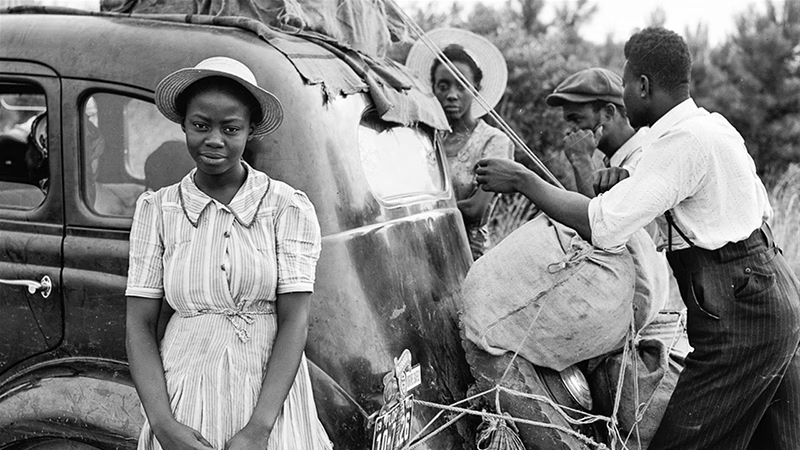Uncover the often-overlooked influence of St. Louis in the journey and settlement patterns of Black Americans during the Great Migration.

Between 1916 and 1970, the Great Migration transformed the demographic and cultural landscape of America. Over six million African Americans left the South, seeking refuge from the entrenched racism of the Jim Crow era and the economic hardships tied to sharecropping and agricultural labor. They moved north and west, drawn by the promise of industrial jobs, better education, and freedom from racial terror. Among the cities that played a pivotal role during this historic movement, St. Louis emerged as a significant destination for migrants, offering both opportunities and challenges in its unique position as a “northern city with southern exposure.”
A Major Destination for Migrants
St. Louis welcomed thousands of African Americans during the Great Migration, becoming a vital hub that connected the South to promising opportunities in the North and West. By 1920, the city had a substantial African American population, contributing to its growing reputation as a place of opportunity and refuge. Between World War I and World War II alone, the city’s population swelled, with over 800,000 residents calling St. Louis home by 1940.
The city’s location as a transportation hub was crucial. Its steamboats, railroads, and bustling industries made it a prime spot for those seeking a fresh start. The Mobile and Ohio Railway system, in particular, served as a lifeline for southern Black communities looking to break free from the crippling constraints of their hometowns. St. Louis’s historic role as the “Gateway to the West” symbolized this sense of new horizons and possibilities.
Established African American Community
Unlike some northern cities, St. Louis had an established African American community long before the Great Migration. These deep-rooted communities provided essential support and guidance to new arrivals navigating urban life for the first time. With organizations, churches, and networks already in place, African Americans in St. Louis forged pathways that helped the newly arrived migrants integrate into the city.
However, the influx of migrants brought with it a dual reality. While St. Louis offered African Americans an escape from the overt violence of the South, it also exposed them to systemic racism in its own forms. Discrimination, residential segregation, and limited access to resources were persistent hurdles that St. Louis’s Black population had to confront.
Navigating Racial Discrimination and Social Welfare
St. Louis played host to both progressive ideals and deeply entrenched segregation. The city became a center for social welfare progressivism, with reformers working to address issues like housing, education, and racial inequality. However, these efforts often ran up against deeply embedded structures of discrimination, such as racially restrictive housing covenants and segregation ordinances.
African American reformers in St. Louis developed creative strategies to challenge these injustices. They established organizations, connected rural migrants with job opportunities, and fought for access to education. Their resilience created pockets of community empowerment within a segregated urban landscape.
The Emergence of Black Suburbs
One of the most distinctive aspects of St. Louis’s role during the Great Migration was the development of Black suburbs like Kinloch. These transitional communities served as stepping stones for many African Americans moving from rural areas to urban life. Kinloch and similar neighborhoods provided a unique space where migrants could find familiarity while adjusting to the faster pace and social complexities of urban living.
The rich culture and close networks in places like Kinloch fostered stability and a sense of belonging for migrants, acting as a buffer against the racial hostility they encountered in other parts of the city. These communities became a testament to the determination of African Americans to thrive despite external barriers.
Northern City with Southern Exposure
St. Louis’s reputation as a “northern city with southern exposure” captures the complexity of its environment during the Great Migration. On the one hand, it offered opportunities for employment, education, and social mobility. On the other hand, the city’s cultural and political landscape was shaped by both northern progressiveness and southern segregationist practices.
For African Americans moving to St. Louis, this duality meant adapting to a city that could feel both welcoming and hostile. It was a place where one could escape the brutality of the Deep South, yet still face systemic inequalities that limited their advancement.
The Cultural Dynamics of St. Louis
The larger established African American community in St. Louis played a crucial role in shaping the city’s cultural dynamics during this period. Churches, social clubs, and cultural organizations became the backbone of community life, offering spaces where African Americans could come together to celebrate their heritage, exchange ideas, and support one another.
These cultural hubs also spurred a wave of creativity and self-expression that enriched the city’s overall identity. From gospel choirs to jazz performances, St. Louis thrived as a center of Black culture and artistry, contributing to the broader cultural Renaissance happening across the country during and after the Great Migration.
A Legacy of Transformation
The Great Migration left a lasting imprint on St. Louis, transforming it into a city deeply connected to the African American struggle for equality and opportunity. The demographic shifts drained much of the rural Black population from the South, while also reshaping the urban North in significant ways. Today, we can still see the legacy of the migration in St. Louis’s neighborhoods, its cultural fabric, and its ongoing fight for justice and equity.
For the African Americans who chose St. Louis as their new home, the city represented a blend of opportunity and challenge, a place where they could forge a fresh start while continuing the fight for freedom and equality. Through their determination and resilience, they transformed St. Louis into a pivotal chapter in the story of the Great Migration, forever changing the history of the United States.
#GreatMigration #StLouisHistory #BlackHistory


